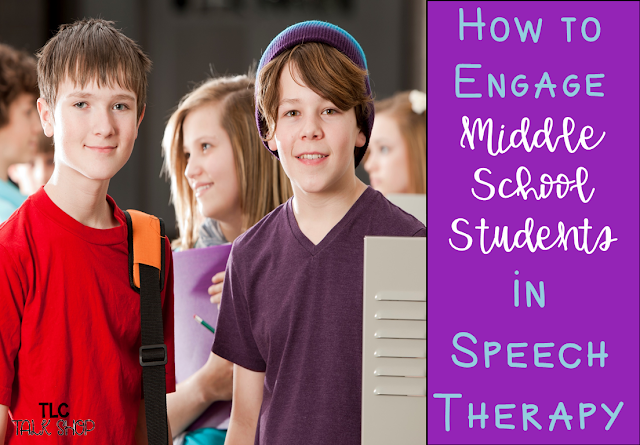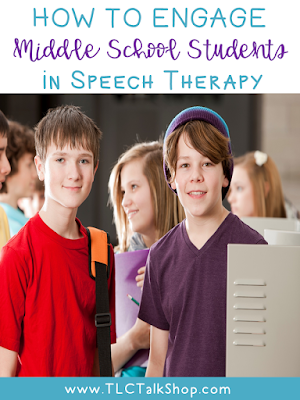Let’s be real for a moment. If you look at the BIG companies that sell us resources to target speech and language skills, you won’t find much geared towards our secondary age students. In fact, recently I compiled a list of speech and language games that are commercially out there to target a variety of speech and language skills and something I was shocked to find was that when the company marked the ages it was appropriate for, it would start with something like “2nd grade and Up”. Okay, up to what age? I know that resource wouldn’t engage my 9-year-old, let alone a middle school student! So how do we keep them engaged?!
LET THEM BRING IN MATERIALS:
I once had a group of girls working on articulation and all they wanted to talk about was their favorite boy band and all about the boys in it! So, I let them bring in teen magazines. We searched for words that had their sounds and made a list. If they were at the drilling level, they still had to drill those words but then could tell me something about the band. If they were at the carryover level, we just had conversations about the group.
Another student was really into theater and so he brought in old playbills for performances he had watched and/or participated in. When he was chosen to be in the school performance, he brought in different directions for scenes and his lines. He was working on using his fluency shaping strategies and desensitization.
If you let them bring in the materials, it is a win-win! You do not need to plan so much and search like crazy for engaging materials and they are more than happy to participate in speech therapy. Just be sure to have some sort of back up plan, because sometimes they do forget. I always have a pad of paper beside me because when all else fails- simply talk. Yep, just have a conversation with them about their interests and you can jot down words to target articulation, language, and fluency!
TECHNOLOGY CAN BE OUR FRIEND
Although a lot of the apps made for speech and language skills are created for our little friends in mind, there are a few really good apps such as Newsela and Conversation Builder. Truthfully, I use my tablet to access Newsela online and appropriate Youtube videos (so check them out beforehand). Sarah Wu, a bilingual SLP, has a great youtube channel. She has a series of wordless life skill videos where she cooks up a lot of yummy treats. She has also compiled a playlist from other youtube sites that have wordless videos to teach problem-solving. Check her channel out and subscribe. With a little digging on youtube, you can find a lot of great resources to engage our middle school students and get them talking and practicing their speech and language skills!
For my fluency students, I have spent time checking out the National Stuttering Association and the Stuttering Foundation websites with them so that they were aware that these sites exist and where they can find additional support.
We have even talked about favorite celebrities and looked them up on Wikipedia. Yep, that is right. I am not ashamed to admit it. I do always inform the students beforehand that all of the information on the site may not be accurate but it at least gives us a starting place.
USE THEIR CURRICULUM
Some of our students have busy after school lives or parents that have super busy lives which makes it difficult for completing all of their work. They may have a presentation that they are working on or reading multiple chapters and completing an outline or answering questions. You can help them! You can target specific sounds, help them break down the language to better understand the materials, and/or have them practice their presentation using their best speech sounds and/or fluency shaping techniques. Sometimes, being just an additional adult that wants to help and see them succeed encourages them to come to speech since it makes them feel special. I have even let them bring in their math books too! Math becomes more complex when they have to follow multiple steps to complete a problem and teaching them about the context clues written into those problems, helps them understand the steps that they need to take to come up with the correct answer.
USE FUNCTIONAL MATERIALS FOUND IN THE COMMUNITY
I have brought in local menus and sales advertisements. We have had some great discussions about why something would be a good purchase, what dream purchases they would make and why, and what restaurants they would like to try or have tried and did not like. I was shocked to learn that some of my students had very strong opinions about places in the community! It was great to see some of their eyes light up when we talked about some of the new video games in the flyer or other items they were interested in. Hint: the electronics section and the self-care (skin care and make-up) sections were always the big hits in the sales advertisements.
For additional ideas, check out this post on using literature for Middle School Speech Therapy.





